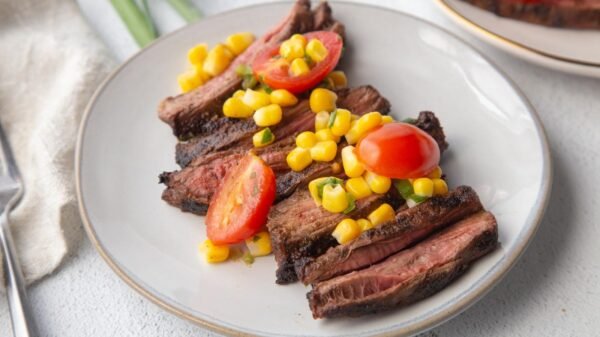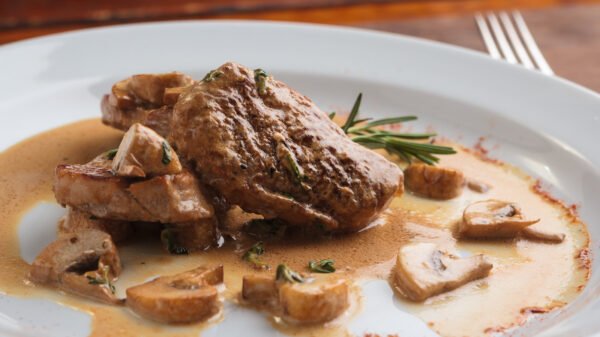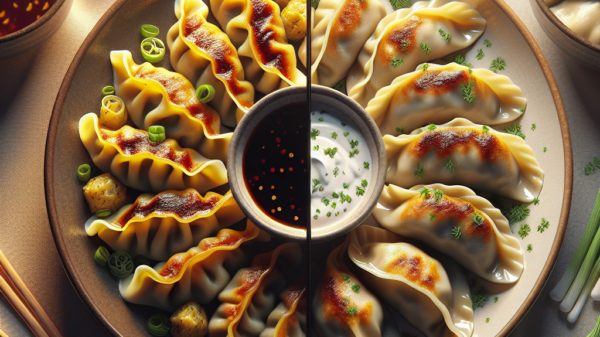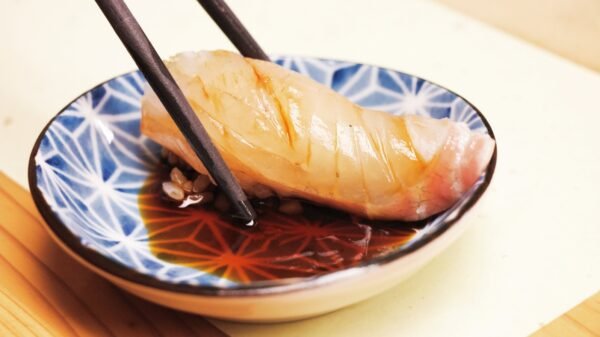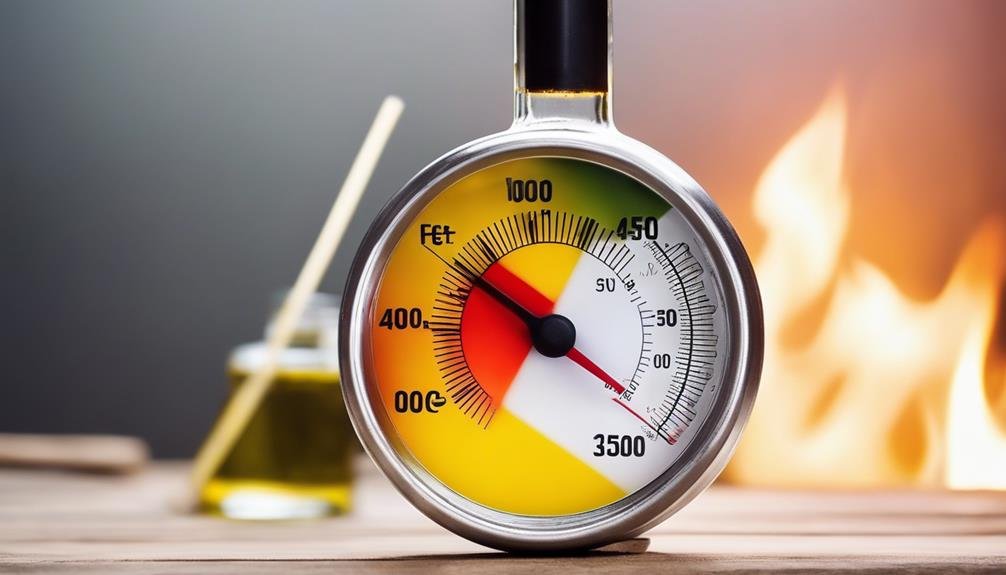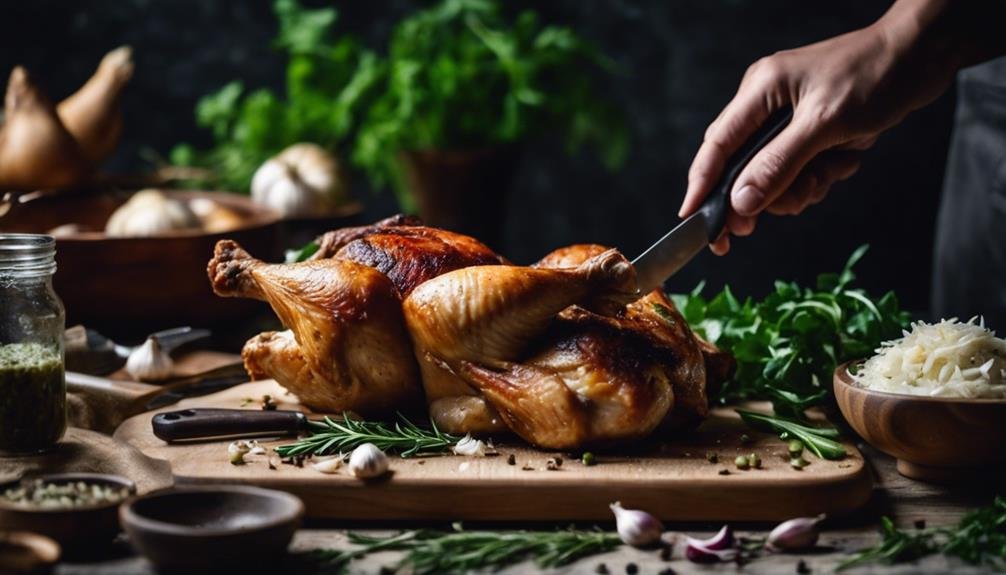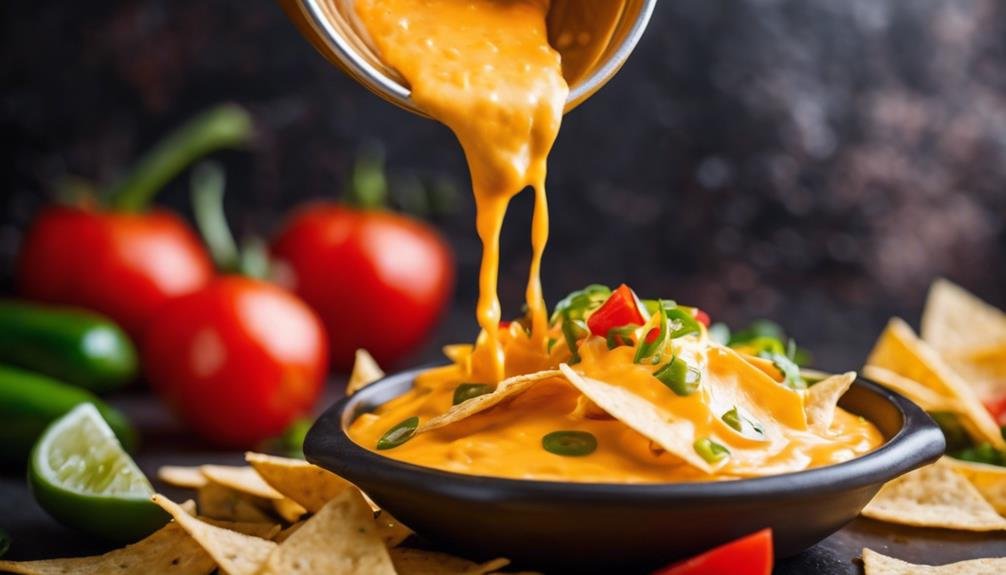Did you know that nearly 75% of home cooks don’t know their cooking oil’s smoke point? That’s like driving with a blindfold, risky and unnecessary.
You’re smarter than that. You want to sizzle, not fizzle when whipping up your culinary masterpieces. The trick isn’t just about dialing in the right temperature; it’s knowing your oil like a sommelier knows their wine. Smoke points, thermal stability, and a touch of chemistry become your best friends.
But how do you navigate this slippery slope without turning your kitchen into a chemistry lab? Stick around, and let’s crack the code together, ensuring your dishes stay delicious and your eyebrows intact.
Cooking Oil’s Maximum Key Takeaways
- Different oils have varying smoke points, which is essential for selecting the right oil for cooking methods.
- High-smoke point oils like avocado are ideal for high-heat cooking, minimizing harmful compounds.
- An infrared thermometer accurately measures oil temperature, preventing it from overheating.
- Small-scale tests can help determine the exact smoke point of an oil for consistent cooking quality.
Understanding Smoke Points
To dodge the culinary misstep of a smoky kitchen and bitter flavors, it’s key to grasp the concept of smoke points—the temperature at which your cooking oil throws in the towel and starts to smoke.
Now, unless you’re aiming for that “burnt chic” taste, knowing the smoke point of the oil you choose is like knowing the exact moment to pull a magician’s tablecloth without disturbing the dishes—it’s essential. Different oils have varying smoke points due to their composition and refinement process. This means some oils can handle the heat, while others fizzle out faster than a poorly planned party.
Choosing the right oil for your culinary escapades isn’t just about flavor but chemistry. Heat an oil beyond its smoke point, and you risk a smoke alarm serenade—you’re also inviting harmful compounds and off-flavors to your dish. Selecting oils with high enough smoke points for your cooking method is pivotal to ensuring your kitchen masterpiece remains just that.
Monitoring your oil’s temperature closely guarantees you won’t cross the line into the bitter unknown. So, when serving others your culinary creations, remember that the right choice in cooking oil makes all the difference.
Selecting the Right Oil
Exploring the vast sea of cooking oils requires a keen eye for detail, especially when pinpointing the perfect match for your high-heat culinary adventures. You must dive deep into the world of smoke points to choose the right cooking oil. These aren’t just fancy terms; they’re your roadmap to flavorful, non-charred dishes. High smoke point oils, think above 400°F, are your best pals for the sizzle and pop of deep-frying or the quick tosses of stir-frying. They stand tall against the heat, ensuring your meals are deliciously seared, not smoked out.
But here’s the twist: not all culinary quests demand the armor of high smoke point oils. For those delicate dressings or light sautés, cozy up to oils with lower smoke points. They’ll add that subtle, nuanced flavor without the drama of burning or off-flavors.
High-quality heroes like avocado or Zero Acre oil are your go-to for turning up the heat, boasting smoke points that leave lesser oils in the dust. Remember, understanding your oil’s smoke point isn’t just about avoiding a smoky kitchen; it’s about preserving the essence of your ingredients and keeping those harmful compounds at bay. So, wield this knowledge wisely and watch your culinary creations soar.
Testing Oil Temperature Safely
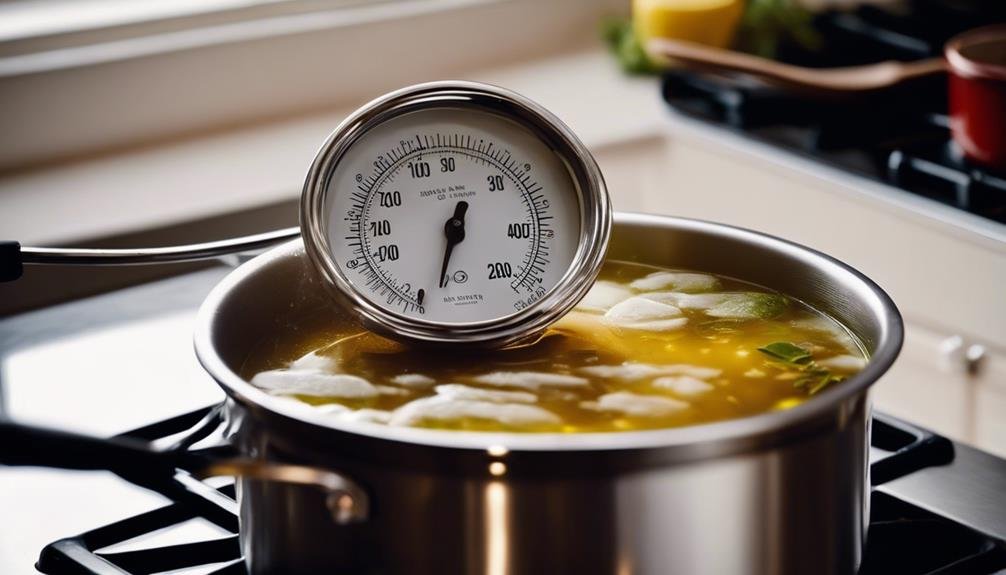
After selecting the right oil with a keen eye on smoke points, it’s time to master the art of measuring its heat without getting burned, figuratively and literally. Here’s where the magic of technology meets traditional cooking wisdom. Whip out your infrared thermometer, the unsung hero in this culinary quest, to gauge your oil’s temperature accurately. It’s like having a secret weapon in your apron pocket, ensuring you never accidentally cross the dreaded smoke point.
Keep a vigilant watch over your oil as it heats; an unblinking eye can save the day. Remember, you’re not just cooking; you’re conducting a symphony of flavors where every degree matters. For those who love a good experiment, small-scale tests to pinpoint your oil’s exact smoke point can be enlightening and fun. Just a dash here and a test there, and you’re the culinary equivalent of a mad scientist.
Remember to jot down your findings. These notes are your roadmap to consistently perfect dishes. By staying under the radar—below that maximum temperature—you guarantee dishes that are as flavorful as they’re healthy. Testing oil temperature isn’t just about safety; it’s about elevating your cooking game to the next level.
Managing Heat During Cooking
Mastering the art of managing heat during cooking is akin to walking a tightrope, where the balance between too hot and right makes all the difference in your culinary creations. Remember that your trusty kitchen thermometer is your best friend when you’re frying up a storm. It’s the secret to not playing a guessing game with your oil’s temperature.
You’ve got to keep an eye on that thermometer to guarantee your cooking oils are strutting their stuff within their safe temperature range. Consider adjusting your heat settings as dialing in the perfect pitch in a symphony of flavors. Too low, and you’re in slow-mo, too high, and you’re in the danger zone.
And here’s the kicker – not all oils are created equal. They each have their smoke point, that magic number where they start singing the blues, and your kitchen turns into a smoke show, not the good kind. Choose your cooking oil like you’re casting the lead in a play; it’s got to be the right fit for your frying needs. In the end, proper temperature management isn’t just about avoiding a culinary catastrophe; it’s about hitting those high notes for a dish that truly sings.
Recognizing and Preventing Overheating
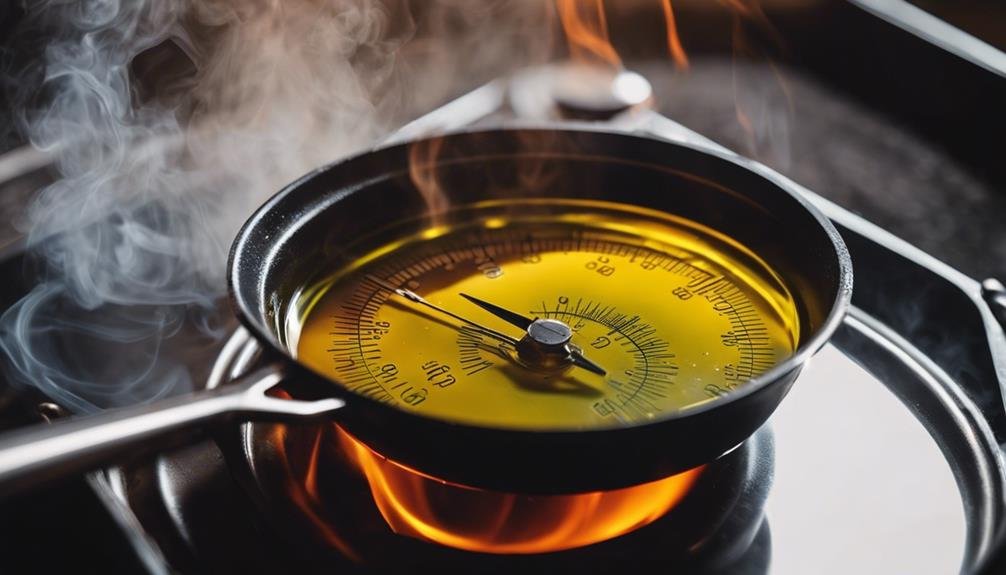
Having honed your skill in managing heat, it’s time to zero in on spotting and sidestepping the pitfalls of overheating your cooking oil. You know, when your kitchen resembles a smoky jazz club, you’ve likely missed the mark. To keep your culinary performances smooth and your dishes delightful, wielding a thermometer is your first act of defense. This handy tool isn’t just for checking if your turkey’s done; it’s pivotal in preventing your oils and fats from hitting their smoke point – a culinary faux pas.
Remember, not all oils groove to the same beat. Each has its smoke point, that vital temperature where oils break down, releasing a not-so-enticing aroma and harmful compounds. For those high-temperature cooking solos, like searing a steak or mastering the art of the perfect fry, reach for oils with high smoke points. Think avocado or peanut oil – they’re the robust backup singers to your lead vocals.
Maintaining oil stability is akin to keeping your cool during a kitchen ballet. Keep it below its maximum temperature range to preserve both flavor and quality. After all, you aim to serve harmonious dishes that resonate with care, not to orchestrate a smoke-filled encore.
Frequently Asked Questions
What Is the Maximum Temperature for Cooking Oil?
The maximum temperature for cooking oil depends on its type, with avocado oil reaching up to 520-570°F. To ensure accuracy, consider using an Infrared Thermometer. It’s crucial to avoid exceeding the oil’s smoke point to maintain safety and flavor.
How Do You Measure Cooking Oil Temperature?
You can measure cooking oil temperature using a cooking thermometer or an infrared thermometer. For the cooking thermometer, insert it into the oil without touching the pan’s bottom to get an accurate reading. Alternatively, an infrared thermometer allows for a no-contact temperature check. Remember always to handle these tools carefully to ensure safety.
How Can You Tell if Oil Is 350 Without a Thermometer?
You can determine if oil is at 350°F without a thermometer by observing a shimmer or slight smoke emitting from the oil. Additionally, you can insert a wooden spoon into the oil; if it bubbles around the stick, the temperature is likely correct. Another method is to drop a small piece of bread into the oil; if it sizzles upon contact, it has reached the desired temperature.
How Do You Test Cooking Oil for Safety?
First, check the temperature of your cooking oil with an infrared thermometer to ensure it is safe. Then, perform a pan test to observe when it starts smoking, indicating it’s reaching its smoke point. Keep a record of the smoke points of various oils for safe cooking practices in the future.
Conclusion
So, you’ve got the lowdown on keeping your cooking oils happy and your dishes divine. Remember, it’s all about that smoke point and keeping things stable.
Pick your oil wisely—a high smoke point’s your friend. Don’t just crank up the heat; test and manage it like a pro. And if your oil starts smoking like it’s auditioning for a barbecue, you’ve gone too far.
Play it cool, keep it smart, and your kitchen escapades will be spectacular.


